Heart attacks are a leading cause of death worldwide, affecting millions each year. The shocking part is that many individuals don’t recognize the signs until it’s too late. With every minute that passes during a heart attack, the risk increases significantly. Understanding what to look for and how to respond can mean the difference between life and death. Imagine being in a situation where someone you care about suddenly clutches their chest or complains of intense discomfort. Would you know what to do? It’s crucial not only to understand heart attacks but also to be prepared for emergencies when they arise. This guide will walk you through recognizing symptoms, taking swift action, and debunking common myths surrounding first aid for heart attacks.
Common Signs and Symptoms of a Heart Attack
The Knowledge Gap in First Aid should never be an issue if one immediately recognizes the signs and symptoms. Indeed, it can be life-saving. It’s crucial to pay attention to your body and understand what it might be trying to tell you. Common symptoms often include chest pain or discomfort, which feels like pressure or squeezing. This sensation may come and go, making it easy to dismiss at first. Additionally, shortness of breath is another red flag that shouldn’t be ignored. This can occur alongside other symptoms or on its own. You might also experience nausea, lightheadedness, or cold sweats. These signs are especially common among women but shouldn’t be overlooked by anyone.
The Importance of Acting Quickly in a Heart Attack Emergency

When a heart attack strikes, time is of the essence. Each minute that passes can significantly impact survival and recovery. Quick action can save lives. During a heart attack, the heart muscle begins to suffer from a lack of oxygen. This damage increases with every passing moment. Recognizing symptoms early can make all the difference. Calling for emergency help immediately is crucial. While waiting for assistance, performing first aid measures may stabilize the patient’s condition. These steps are vital in preventing further complications.
First Aid Steps for a Heart Attack
If you suspect someone is having a heart attack, your response can make all the difference. First, call emergency services immediately. Time is critical. While waiting for help, encourage the person to sit down and stay calm. Stress can worsen symptoms. If they’re conscious and not allergic to aspirin, offer them a standard dose; it may help thin the blood. Monitor their condition closely. Look for signs of distress or loss of consciousness. If they become unresponsive, be ready to perform CPR. Position their body properly: ensure they’re on their back on a firm surface. Start chest compressions at a rate of 100-120 per minute until professional help arrives.
Common Misconceptions About First Aid for Heart Attacks

Many people believe that heart attacks only happen to older individuals. This misconception can lead to delays in recognizing symptoms, especially among younger adults. Another common myth is that a person experiencing a heart attack will always clutch their chest in pain. While it’s true this can occur, some may feel discomfort elsewhere like the arms, back, or jaw, and might not exhibit obvious distress signals.
Heart attacks remain a leading cause of death worldwide. Understanding how to recognize and respond to the signs can save lives. Knowing the symptoms, such as chest pain, shortness of breath, and nausea, is crucial for timely action. Time is of the essence during a heart attack emergency. The quicker you act, the better the chances of survival. It’s vital to call emergency services immediately if you suspect someone is having a heart attack.…





 Choosing the right photographer is crucial when it comes to immortalizing your barn wedding. Look for someone who understands your vision and style. Do your research, browse through portfolios, and read reviews to get a feel for their work. Meet with potential photographers in person or virtually to see if you click.
Choosing the right photographer is crucial when it comes to immortalizing your barn wedding. Look for someone who understands your vision and style. Do your research, browse through portfolios, and read reviews to get a feel for their work. Meet with potential photographers in person or virtually to see if you click.





 One of the critical things to know about the Christmas elf tradition is that elves are said to be Santa’s helpers. This means that they help him make toys in the workshop and keep an eye on children to see if they’re being naughty or nice. Your elf at home might not do these specific tasks, but it’s fun to imagine they’re helping out Santa somehow.
One of the critical things to know about the Christmas elf tradition is that elves are said to be Santa’s helpers. This means that they help him make toys in the workshop and keep an eye on children to see if they’re being naughty or nice. Your elf at home might not do these specific tasks, but it’s fun to imagine they’re helping out Santa somehow. Since elves come from all over the world, they have many names. In Scandinavian countries, they’re called “tomte” or “nisse.” In Germany, they’re called “Krampus.” And in the United States, we call them “Christmas elves.” No matter what you call your elf, they’ll always be a special part of your Christmas tradition.
Since elves come from all over the world, they have many names. In Scandinavian countries, they’re called “tomte” or “nisse.” In Germany, they’re called “Krampus.” And in the United States, we call them “Christmas elves.” No matter what you call your elf, they’ll always be a special part of your Christmas tradition. One of the most fun things about having an elf is that they like to play tricks! They might move around your house overnight, hide in different places during the day, or even leave little notes or gifts for you to find. This mischievous behavior is all part of the fun – be sure to keep an eye on your elf so you can enjoy their antics. The Christmas elf tradition is fun and festive to add extra excitement to your holiday season.
One of the most fun things about having an elf is that they like to play tricks! They might move around your house overnight, hide in different places during the day, or even leave little notes or gifts for you to find. This mischievous behavior is all part of the fun – be sure to keep an eye on your elf so you can enjoy their antics. The Christmas elf tradition is fun and festive to add extra excitement to your holiday season.
 If you’re planning on using newborn-size clothes, it’s a good idea to have them ahead of time. Newborns grow quickly, so you might only get to use them for a few weeks. You can always buy bigger sizes later, but it’s nice to have cute little outfits. You might also want to get a few outfits for special occasions, like going home from the hospital or meeting family members for the first time.
If you’re planning on using newborn-size clothes, it’s a good idea to have them ahead of time. Newborns grow quickly, so you might only get to use them for a few weeks. You can always buy bigger sizes later, but it’s nice to have cute little outfits. You might also want to get a few outfits for special occasions, like going home from the hospital or meeting family members for the first time. Childbirth classes will help you learn about the stages of labor, what to expect, and how to manage pain. Classes typically start around week 32 or 33 of pregnancy, so be sure to sign up early. You can usually find them through your hospital or birth center.
Childbirth classes will help you learn about the stages of labor, what to expect, and how to manage pain. Classes typically start around week 32 or 33 of pregnancy, so be sure to sign up early. You can usually find them through your hospital or birth center.
 A pay stub is the sole motivator of employees, and speaking honestly, the only thing that employees look at while working. By providing a pay stub generator, you are satisfying government requirements and catering to the needs of your workforce.
A pay stub is the sole motivator of employees, and speaking honestly, the only thing that employees look at while working. By providing a pay stub generator, you are satisfying government requirements and catering to the needs of your workforce. One of the major benefits of using a pay stub generator is that it helps in reducing employee turnover rates. If you are providing employees with an accurate view of their paycheck, including deductions, then they will be less likely to look for jobs elsewhere.
One of the major benefits of using a pay stub generator is that it helps in reducing employee turnover rates. If you are providing employees with an accurate view of their paycheck, including deductions, then they will be less likely to look for jobs elsewhere.
 The first considerations you should make when choosing an online marijuana dispensary are the products being sold. Ask yourself if you’ll be able to find the right product for your needs in a particular dispensary. Most dispensaries have a wide variety of flowers, strong edibles, topicals, beverages, and more, so it’s wise to look at all these options before committing to one cannabis provider.
The first considerations you should make when choosing an online marijuana dispensary are the products being sold. Ask yourself if you’ll be able to find the right product for your needs in a particular dispensary. Most dispensaries have a wide variety of flowers, strong edibles, topicals, beverages, and more, so it’s wise to look at all these options before committing to one cannabis provider. Apart from the type of product an online dispensary sells, you should also consider its reputation. The best thing to do is ask around the people you know if they have ever heard of a dispensary you are interested in before. If it’s a new one, then check online for reviews and feedback from other customers that are satisfied with their services or not.
Apart from the type of product an online dispensary sells, you should also consider its reputation. The best thing to do is ask around the people you know if they have ever heard of a dispensary you are interested in before. If it’s a new one, then check online for reviews and feedback from other customers that are satisfied with their services or not.
 Due to the increased users of magic mushrooms, the demand has increased, and some sellers are taking advantage of it. Purchasing from a physical dispensary tends to be more expensive most of the time. People are therefore not ready to spend more on a product when a cheaper option is available. Prices online are generally lower. You can also find some websites giving coupons and promotions. Also, you can check the different online stores and select the cheapest.
Due to the increased users of magic mushrooms, the demand has increased, and some sellers are taking advantage of it. Purchasing from a physical dispensary tends to be more expensive most of the time. People are therefore not ready to spend more on a product when a cheaper option is available. Prices online are generally lower. You can also find some websites giving coupons and promotions. Also, you can check the different online stores and select the cheapest. Many people prefer online shopping when buying magic mushrooms due to the convenience. In the comfort of your bed wearing a pajama, you can order magic mushroom and have it delivered to your door. Therefore, as you shop online, some expenses are avoided, enabling you to save money and time.
Many people prefer online shopping when buying magic mushrooms due to the convenience. In the comfort of your bed wearing a pajama, you can order magic mushroom and have it delivered to your door. Therefore, as you shop online, some expenses are avoided, enabling you to save money and time.

 As a businessman, as you are, you must have brought out the calculator and began computing your expenses when hiring staff from an agency. But rest assured, there are more benefits than costs. If you employ individual workers, you may have to train them for days, provide their uniforms, and pay their wages. But are you sure they will meet your expectations?
As a businessman, as you are, you must have brought out the calculator and began computing your expenses when hiring staff from an agency. But rest assured, there are more benefits than costs. If you employ individual workers, you may have to train them for days, provide their uniforms, and pay their wages. But are you sure they will meet your expectations?
 If you want to purchase marijuana online, make sure that you start by using a reliable source. In other words, understanding how to buy cannabis online successfully and effectively comes by using a reliable source. Make sure that you look for a reputable source that you can trust. You can quickly identify a trustworthy and dependable source by looking at the supplier’s website to see if it appears comprehensive and professional.
If you want to purchase marijuana online, make sure that you start by using a reliable source. In other words, understanding how to buy cannabis online successfully and effectively comes by using a reliable source. Make sure that you look for a reputable source that you can trust. You can quickly identify a trustworthy and dependable source by looking at the supplier’s website to see if it appears comprehensive and professional.
 A driver’s permit is a prerequisite to being allowed on the road. While some drivers might do just fine on the streets without a driver’s license, a driver’s license is a must-have. One of the essential stages in the life of any driver is when they take the learner’s permit test. This permit does not come easy. You might be surprised to realize that more than a third of the applicants fail the test on their first try.
A driver’s permit is a prerequisite to being allowed on the road. While some drivers might do just fine on the streets without a driver’s license, a driver’s license is a must-have. One of the essential stages in the life of any driver is when they take the learner’s permit test. This permit does not come easy. You might be surprised to realize that more than a third of the applicants fail the test on their first try.


 As said above the internet definitely is the best source of information. However, you cannot trust everything you read on the net. And the reason for this is that anyone can create a site and start vending products, in this case, shrooms. To make sure you are using a reliable supplier for your packs of shrooms, you need to read reviews. Point to also note is that reviews will not only help you identify the right supplier but will also help you know the right products to purchase.
As said above the internet definitely is the best source of information. However, you cannot trust everything you read on the net. And the reason for this is that anyone can create a site and start vending products, in this case, shrooms. To make sure you are using a reliable supplier for your packs of shrooms, you need to read reviews. Point to also note is that reviews will not only help you identify the right supplier but will also help you know the right products to purchase. The other vital point that you should never skip is to know the content contained in pack of shrooms. Of course, most companies will sell products that are 100% natural, but you should not assume. Remember, there are greedy people out there who mix their products with synthetic and other unhealthy elements so that they can make more money. Quality shrooms should be 100% natural.
The other vital point that you should never skip is to know the content contained in pack of shrooms. Of course, most companies will sell products that are 100% natural, but you should not assume. Remember, there are greedy people out there who mix their products with synthetic and other unhealthy elements so that they can make more money. Quality shrooms should be 100% natural.



 need to go for nothing but the best. You might start by looking at best awning reviews for you to make an informed decision. As much you might be limited by a budget, you should not pick a unit that will start fading in a couple of years. Going for a quality unit is all about value for money.
need to go for nothing but the best. You might start by looking at best awning reviews for you to make an informed decision. As much you might be limited by a budget, you should not pick a unit that will start fading in a couple of years. Going for a quality unit is all about value for money. Awnings can be used to market or make your business stand out. As such, you should focus on making the design stand out. You might be forced to buy an expensive unit to ensure you stand out. Not just that, the coloration and fonts used on the awning should also match the local vibe. If you are not so sure about what you will do to make it stand out, it can be great if you consulted a signage expert.
Awnings can be used to market or make your business stand out. As such, you should focus on making the design stand out. You might be forced to buy an expensive unit to ensure you stand out. Not just that, the coloration and fonts used on the awning should also match the local vibe. If you are not so sure about what you will do to make it stand out, it can be great if you consulted a signage expert.



 There are several websites offering free download tv series episodes online. You can visit any of these websites and download the series of your choice. Most of the sites have easy-to-follow guidelines that help you download the TV series of your choice easily. You will come across Canadian, Australia, American and British TV series of all genres. These shows are downloadable with a simple click of a mouse. There are no registrations or verifications- just a click of a button and you get your TV show saved on your mobile device. The shows can be downloaded in various formats, such as .mp4, .mkv, or .avi.
There are several websites offering free download tv series episodes online. You can visit any of these websites and download the series of your choice. Most of the sites have easy-to-follow guidelines that help you download the TV series of your choice easily. You will come across Canadian, Australia, American and British TV series of all genres. These shows are downloadable with a simple click of a mouse. There are no registrations or verifications- just a click of a button and you get your TV show saved on your mobile device. The shows can be downloaded in various formats, such as .mp4, .mkv, or .avi. Provision of the latest and trendiest TV shows is one of the many advantages of downloading TV shows online as compared to watching them on the traditional TV. It takes weeks or even months for a show to be completed on the traditional TV channel. In this period, many other shows will have been produced and distributed. Just visit a website that provides free downloads of TV shows, and you will get a clue of what I am talking about. You will realize that new shows are added every day. Clearly, you can watch more than 20 different shows before the folks on the traditional TV watch a complete a single show.
Provision of the latest and trendiest TV shows is one of the many advantages of downloading TV shows online as compared to watching them on the traditional TV. It takes weeks or even months for a show to be completed on the traditional TV channel. In this period, many other shows will have been produced and distributed. Just visit a website that provides free downloads of TV shows, and you will get a clue of what I am talking about. You will realize that new shows are added every day. Clearly, you can watch more than 20 different shows before the folks on the traditional TV watch a complete a single show.



 Professionals are experienced in repairing the HVAC units, and nothing would be too big for them to handle. They also have the right tools to use which prevents further damage. Additionally, they use legit spare parts in case any needs a repair. Such parts are supplied by manufacturers whom they closely work together. Therefore, only allow an expert to who has some years of experience to handle the air conditioning units.
Professionals are experienced in repairing the HVAC units, and nothing would be too big for them to handle. They also have the right tools to use which prevents further damage. Additionally, they use legit spare parts in case any needs a repair. Such parts are supplied by manufacturers whom they closely work together. Therefore, only allow an expert to who has some years of experience to handle the air conditioning units. Unlike servicing, inspection is shallow, and it is often done when an expert is preparing a quote. Due to their experience, they only need to assess the unit for a few minutes before identifying the problem. However, it is not worth to let just anyone touch your cooling units. Only experts who you have vetted should do that.
Unlike servicing, inspection is shallow, and it is often done when an expert is preparing a quote. Due to their experience, they only need to assess the unit for a few minutes before identifying the problem. However, it is not worth to let just anyone touch your cooling units. Only experts who you have vetted should do that.
 People looking for all time rustic clay tiles on their roofs can go for this option. Whether looking for ceramic or the clay options, these experts will allow you to enjoy that. The expertise employed include a sturdy frame to hold the heavy tiles and professional arrangements of the tiles. Depending on personal preference, different colors can be mixed to form a pattern. Likewise, the tiles come in different designs to suit various people. These experts also advise on the best tiles supplier.
People looking for all time rustic clay tiles on their roofs can go for this option. Whether looking for ceramic or the clay options, these experts will allow you to enjoy that. The expertise employed include a sturdy frame to hold the heavy tiles and professional arrangements of the tiles. Depending on personal preference, different colors can be mixed to form a pattern. Likewise, the tiles come in different designs to suit various people. These experts also advise on the best tiles supplier. Getting a company to offer a free quote for various services they offer means they are serious about what they do. Apart from that a free advice adds spice to the food as most people do not know exactly what’s best for them. Choose Ocean Seven roofing pros to enjoy these and more.…
Getting a company to offer a free quote for various services they offer means they are serious about what they do. Apart from that a free advice adds spice to the food as most people do not know exactly what’s best for them. Choose Ocean Seven roofing pros to enjoy these and more.… access to shopping malls and grocery stores for easy of shopping and a place for the family to hang out? Are you single and like eating out and love entertaining yourself and would want a neighborhood that has restaurants and places where one can go and enjoy themselves? Likewise, what facilities do you want in the condo community, do you want a community with a gym, pool or a playground. Determining your need will help you find a condo that best suits you.
access to shopping malls and grocery stores for easy of shopping and a place for the family to hang out? Are you single and like eating out and love entertaining yourself and would want a neighborhood that has restaurants and places where one can go and enjoy themselves? Likewise, what facilities do you want in the condo community, do you want a community with a gym, pool or a playground. Determining your need will help you find a condo that best suits you. Associations manage most condos. It is important that one does research on the associations that manages the condo they plan on purchasing. Key things that one should find out is what are the rules and policies of living in the condo. One needs to also find out about the cost of the association fee and what it entails. The association fee will have a direct impact on the decision of purchasing a condo from the condo community or not. For it will be a constant cost that will need to be paid monthly or annually depending on the condo association policy.
Associations manage most condos. It is important that one does research on the associations that manages the condo they plan on purchasing. Key things that one should find out is what are the rules and policies of living in the condo. One needs to also find out about the cost of the association fee and what it entails. The association fee will have a direct impact on the decision of purchasing a condo from the condo community or not. For it will be a constant cost that will need to be paid monthly or annually depending on the condo association policy. stored away. The second type is portable and hook-on high chairs these are designed to be attached or strapped to a table.
stored away. The second type is portable and hook-on high chairs these are designed to be attached or strapped to a table. Safety features are an important consideration and component. Ensure these features are in the high chair; a crotch post which is fixed at the center, safety- restraint system and a safety manufacturer certification showing that the product has met the safety standards.
Safety features are an important consideration and component. Ensure these features are in the high chair; a crotch post which is fixed at the center, safety- restraint system and a safety manufacturer certification showing that the product has met the safety standards.

 materials
materials
 Potential and existing customers will always want some information concerning the organizations’ products. Having a consistent and reliable customer care unit ensures clients are given the information needed to make decisions concerning their purchases. They are more likely to opt for the company’s services or products as they understand the terms of sale better.
Potential and existing customers will always want some information concerning the organizations’ products. Having a consistent and reliable customer care unit ensures clients are given the information needed to make decisions concerning their purchases. They are more likely to opt for the company’s services or products as they understand the terms of sale better. With the introduction of a new product in the market, clients may make inquiries to get to understand it better. The customer care unit can act as the best place where these queries can be placed and answered. Printing of brochures to be placed at the customer care desks can also ensure they are seen by a larger number of customers who walk in into the organization and any inquiry of the same can be answered at the desk.
With the introduction of a new product in the market, clients may make inquiries to get to understand it better. The customer care unit can act as the best place where these queries can be placed and answered. Printing of brochures to be placed at the customer care desks can also ensure they are seen by a larger number of customers who walk in into the organization and any inquiry of the same can be answered at the desk.
 This particular kitchen appliance can cater to your daily cooking needs. You can prepare different types of dishes for your family with no problem. Fried chicken, roasted beef, stuffed chicken breast, nutritious bread, name it and you can have it all through the use of the best hot air fryer.
This particular kitchen appliance can cater to your daily cooking needs. You can prepare different types of dishes for your family with no problem. Fried chicken, roasted beef, stuffed chicken breast, nutritious bread, name it and you can have it all through the use of the best hot air fryer. A hot air fryer comes with an owner’s manual that explains how to use it properly. And with this step-by-step guide, you won’t have to worry about committing mistakes in using it even if it is your very first time to utilize such equipment.
A hot air fryer comes with an owner’s manual that explains how to use it properly. And with this step-by-step guide, you won’t have to worry about committing mistakes in using it even if it is your very first time to utilize such equipment.
 The best part is that you and your kids will never know what Hatchimal is inside the egg. While it is in the egg form, your kids can learn to play with it through the different colors from its eyes and the cute sound made by it.
The best part is that you and your kids will never know what Hatchimal is inside the egg. While it is in the egg form, your kids can learn to play with it through the different colors from its eyes and the cute sound made by it. The Hatchimal can sing and interact with your kids. While in the baby stage, it can sing “Happy Birthday” and your kids will have to learn to take care of it. Padding its head will make it feel good and say “I love you.” You can also feed your Hatchimal by tilting her forward.
The Hatchimal can sing and interact with your kids. While in the baby stage, it can sing “Happy Birthday” and your kids will have to learn to take care of it. Padding its head will make it feel good and say “I love you.” You can also feed your Hatchimal by tilting her forward.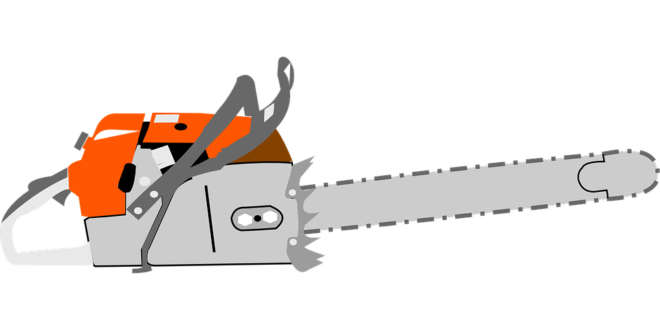
 n home and garden stores. The size you need depends on the scale of the job and whether it is a professional job or a house job. When you go into the stores try out the saws, hold them in your hand to see if the weight and size are suitable for you. Check out the safety features and warranties to make sure they meet the safety guidelines for your region. You can also look at other consumers reviews to see what others have said about the saws that you are interested in buying.
n home and garden stores. The size you need depends on the scale of the job and whether it is a professional job or a house job. When you go into the stores try out the saws, hold them in your hand to see if the weight and size are suitable for you. Check out the safety features and warranties to make sure they meet the safety guidelines for your region. You can also look at other consumers reviews to see what others have said about the saws that you are interested in buying. One thing that you need to avoid are used chainsaws; it may be more trouble than it is worth. You may spend most of your time trying to get it to work, or the blades may need sharpening. It is best to either rent a good saw or buy a new chain saw. This way you will have the newest equipment to use for your project, and you will not have to worry about trying to fix it before getting started on your project.
One thing that you need to avoid are used chainsaws; it may be more trouble than it is worth. You may spend most of your time trying to get it to work, or the blades may need sharpening. It is best to either rent a good saw or buy a new chain saw. This way you will have the newest equipment to use for your project, and you will not have to worry about trying to fix it before getting started on your project.
 The blankets keep the baby warm and comfortable. This allows your baby to find sleep easily. The baby also stays asleep for longer. In addition to that, the baby’s hands and feet are securely tucked inside the swaddle blanket. As such, their movement is checked since the baby cannot be able to throw them in the air. It, therefore, does not startle itself which could wake the baby.
The blankets keep the baby warm and comfortable. This allows your baby to find sleep easily. The baby also stays asleep for longer. In addition to that, the baby’s hands and feet are securely tucked inside the swaddle blanket. As such, their movement is checked since the baby cannot be able to throw them in the air. It, therefore, does not startle itself which could wake the baby. In conclusion, benefits of swaddle blankets are more than risks. When swaddling, place the baby with face up and back down and avoid wrapping too tightly.…
In conclusion, benefits of swaddle blankets are more than risks. When swaddling, place the baby with face up and back down and avoid wrapping too tightly.…
 k about asking a company to make a video for your organization, and they become late in delivering the product. You can click this link for more info about Filmtrees.com a Brisbane based film production company. It does not matter whether the video they made is effective or not. Such things can deteriorate your company’s position in the industry.
k about asking a company to make a video for your organization, and they become late in delivering the product. You can click this link for more info about Filmtrees.com a Brisbane based film production company. It does not matter whether the video they made is effective or not. Such things can deteriorate your company’s position in the industry. as the creation of videos is concerned, creativity should at its lowest be awesome. The company should incorporate creativity as much as it can in creating quality videos. The good thing about creativity is that it will make people find your video interesting and they can stay watching your video to the end.
as the creation of videos is concerned, creativity should at its lowest be awesome. The company should incorporate creativity as much as it can in creating quality videos. The good thing about creativity is that it will make people find your video interesting and they can stay watching your video to the end.
 Before signing the contract, it is important to read through the contract carefully to make sure that there are no hidden clauses and fees. Understand if the contractor provides warranty and for how long, which type of materials is he using, is he using a subcontractor, is insurance available, how long will it take for the contractor to finish the work and much more. Some of these things should be clear and sorted before work begins.
Before signing the contract, it is important to read through the contract carefully to make sure that there are no hidden clauses and fees. Understand if the contractor provides warranty and for how long, which type of materials is he using, is he using a subcontractor, is insurance available, how long will it take for the contractor to finish the work and much more. Some of these things should be clear and sorted before work begins.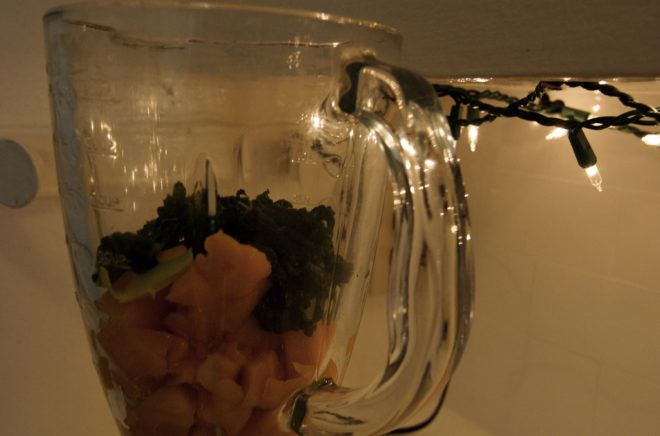
 best have a seven-year warranty.
best have a seven-year warranty. While blending you will need plenty or enough of liquid to mix the ingredients efficiently, a dry mixture may end up pushing up from the blades; it may not seem harmful, but it’s not effective either.
While blending you will need plenty or enough of liquid to mix the ingredients efficiently, a dry mixture may end up pushing up from the blades; it may not seem harmful, but it’s not effective either.
 ding
ding reates the consultants as an external, interim management. In most cases, consultants are directly involved in business on a short-term basis. This makes them utilize their short-lived business engagement in an optimal way. As an interim management team, consultants help small businesses to cover wider areas with less costs on resources. This is a key role for consultants in such small businesses.
reates the consultants as an external, interim management. In most cases, consultants are directly involved in business on a short-term basis. This makes them utilize their short-lived business engagement in an optimal way. As an interim management team, consultants help small businesses to cover wider areas with less costs on resources. This is a key role for consultants in such small businesses.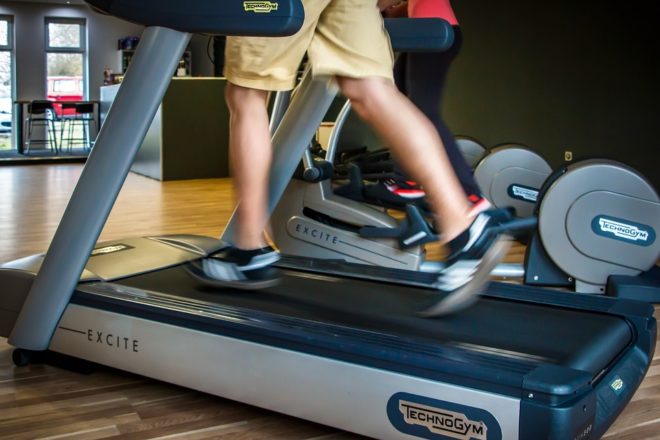
 There are a lot of fast foods dominating people’s tables these days. Processed foods are also on the increase considering they are fast to prepare. Eating well entails that you eat less of fast foods or processed foods. A good healthy diet would comprise of vegetables and fruits. Healthy proteins like whey and casein would be a good option in making a dietary change. One of the strategies of losing weight is eating well. Eating well will enhance your metabolism enabling your body to burn more fat other than storing it.
There are a lot of fast foods dominating people’s tables these days. Processed foods are also on the increase considering they are fast to prepare. Eating well entails that you eat less of fast foods or processed foods. A good healthy diet would comprise of vegetables and fruits. Healthy proteins like whey and casein would be a good option in making a dietary change. One of the strategies of losing weight is eating well. Eating well will enhance your metabolism enabling your body to burn more fat other than storing it. Another way of losing weight is certainly changing lifestyle. Lifestyle will incorporate a lot of things which includes dieting. If your diet is full of deep fried foods, then a changed diet will be good enough. If your lifestyle entails that you have less time sleeping, then you should consider getting more sleep. People who drink alcohol and smoke cigarettes without doing exercises are also advised to have a change in that as well. Having a healthy lifestyle is one way of being fit. Spending time indoors all day can be another way of adding weight. Consider spending time outside engaging in physical activities.
Another way of losing weight is certainly changing lifestyle. Lifestyle will incorporate a lot of things which includes dieting. If your diet is full of deep fried foods, then a changed diet will be good enough. If your lifestyle entails that you have less time sleeping, then you should consider getting more sleep. People who drink alcohol and smoke cigarettes without doing exercises are also advised to have a change in that as well. Having a healthy lifestyle is one way of being fit. Spending time indoors all day can be another way of adding weight. Consider spending time outside engaging in physical activities.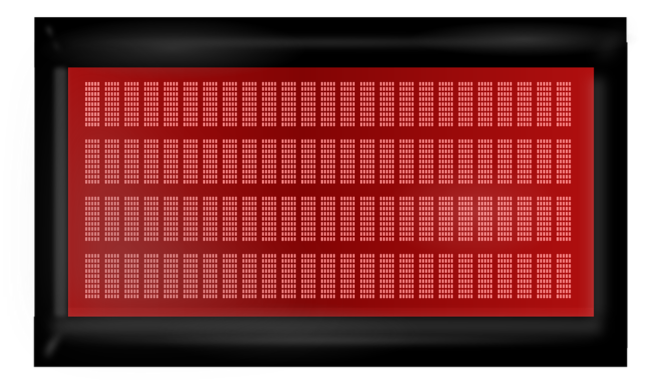
 a room without installing a house-wide heating system. Space heaters are often small, lightweight, and portable, meaning that money can be saved by transporting the heater to the most frequented rooms. They are useful for quickly heating a small area of space. However, the trade-off comes in the high electricity usage; it is not recommended to heat a home entirely using space heaters because they can quickly double one’s electric bill.
a room without installing a house-wide heating system. Space heaters are often small, lightweight, and portable, meaning that money can be saved by transporting the heater to the most frequented rooms. They are useful for quickly heating a small area of space. However, the trade-off comes in the high electricity usage; it is not recommended to heat a home entirely using space heaters because they can quickly double one’s electric bill. A new type of heater, infrared technology can rapidly warm a large area of space without the large power requirements of traditional garage heaters. Infrared heaters warm a room almost instantly through a targeted beam of internally generated heat. They are compact, stylish, and require small amounts of modification or maintenance. However, this technology comes at a price- they can be significantly more expensive than other types of heaters, and often come with limited warranties.…
A new type of heater, infrared technology can rapidly warm a large area of space without the large power requirements of traditional garage heaters. Infrared heaters warm a room almost instantly through a targeted beam of internally generated heat. They are compact, stylish, and require small amounts of modification or maintenance. However, this technology comes at a price- they can be significantly more expensive than other types of heaters, and often come with limited warranties.…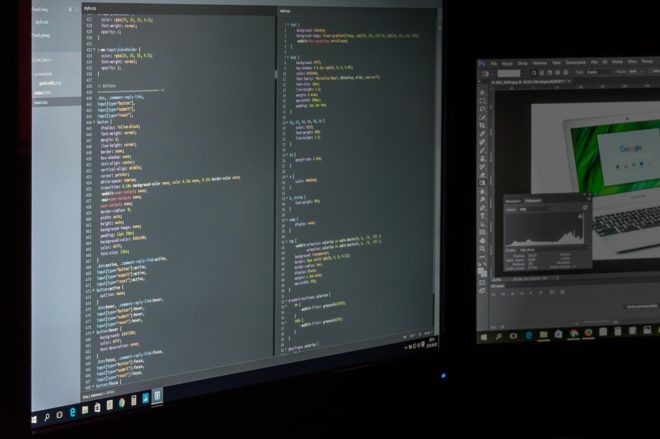
 patients are experienced improved medical care through 3D printed implants and prosthetics. In the aviation sector, 3d printing is used in the development of combustion chamber liners. The earliest adopters of 3d printing were the automotive industry. In the auto industry 3d, printing is used to make functional parts used in testing of vehicles engines and platforms
patients are experienced improved medical care through 3D printed implants and prosthetics. In the aviation sector, 3d printing is used in the development of combustion chamber liners. The earliest adopters of 3d printing were the automotive industry. In the auto industry 3d, printing is used to make functional parts used in testing of vehicles engines and platforms 3d printing has been incorporated in art and education and cultural use. In art 3d printing has been used in making of customizable products such as phone cases dolls and gifts. 3d printing has also been employed in expository artworks made of plastic and metal.
3d printing has been incorporated in art and education and cultural use. In art 3d printing has been used in making of customizable products such as phone cases dolls and gifts. 3d printing has also been employed in expository artworks made of plastic and metal.
 Real estate has proved to be a great source of profit due to the boost in investment property value over time. It goes without saying that any rental property appreciates in value with inflation. Hence, an increase in value implies that sale as well as reinvestment in properties of higher value. Furthermore, a boost in the value will offer an equity line of credit that you can utilize for other investments.
Real estate has proved to be a great source of profit due to the boost in investment property value over time. It goes without saying that any rental property appreciates in value with inflation. Hence, an increase in value implies that sale as well as reinvestment in properties of higher value. Furthermore, a boost in the value will offer an equity line of credit that you can utilize for other investments. This is an exercise that specifically targets the upper abdomen. To get going, lie down on the floor, holding both your hands by the ears rather than behind the head so as to reduce the risk of a neck strain. With both of your feet on the floor, bend your knees and then lift the shoulders and upper back away from the floor with the face looking to the ceiling. As you come up, exhale as much as possible, holding for a second, and then inhaling as you go back to the start position. Repeat the moves fifteen to twenty-five times.
This is an exercise that specifically targets the upper abdomen. To get going, lie down on the floor, holding both your hands by the ears rather than behind the head so as to reduce the risk of a neck strain. With both of your feet on the floor, bend your knees and then lift the shoulders and upper back away from the floor with the face looking to the ceiling. As you come up, exhale as much as possible, holding for a second, and then inhaling as you go back to the start position. Repeat the moves fifteen to twenty-five times. This is another simple exercise that will give you a
This is another simple exercise that will give you a